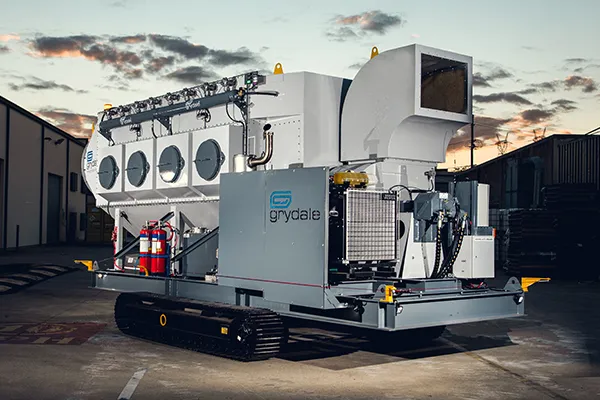Choosing the Best Mobile Dust Suppression System for Remote Sites

Dust suppression is critical in various industries, particularly on remote work sites like mines, quarries, and construction sites. Without proper dust control, these sites can face serious challenges, including environmental violations, health risks for workers, and damage to equipment. For remote locations, where fixed dust suppression systems may not be practical or feasible, mobile dust suppression systems offer a flexible and efficient solution. However, selecting the right BossTek mobile dust suppression system requires careful consideration of the unique demands of remote sites.
Next, let’s explore the key factors to consider when choosing the best mobile dust suppression system for your needs.
The importance of mobility
When dealing with remote sites, mobility is one of the most important factors to consider. Many remote locations are expansive, with constantly shifting work zones, meaning a static dust suppression system may not be effective. A mobile system offers the flexibility to move wherever dust is being generated, ensuring comprehensive coverage across the site. Systems mounted on trailers or integrated into trucks can be relocated as needed, ensuring efficient dust control without extensive setup or infrastructure. For large-scale operations such as mining or construction, it’s essential to choose a system that can be easily towed or driven to various parts of the site. Additionally, some systems come with the option of automatic tracking, allowing them to follow specific work areas or vehicles, continuously adjusting their positioning to target areas where dust is most concentrated. This adaptability is crucial for maintaining dust control in dynamic work environments.

Water availability at remote sites
One of the most significant challenges for remote sites is the limited availability of water, which is a crucial component for dust suppression. When choosing a mobile dust suppression system, it’s essential to consider its water consumption. Some systems are designed to use water more efficiently, relying on fine misting techniques rather than larger droplets to control dust. This approach maximizes dust control while minimizing water usage, making it ideal for remote sites where water is scarce. Water tank capacity is another key consideration. The dust suppression systems you choose require larger water tanks, ensuring they can operate for extended periods without the need for constant refilling. In addition, some systems offer features like variable spray patterns, allowing operators to adjust the water flow based on the level of dust generated. This flexibility ensures that the right amount of water is used, reducing waste and extending the operational time of the system.
Customizing the system for specific site needs
Every remote site has its own unique dust control needs, depending on the type of operation, climate, and regulations. The best mobile dust suppression systems are customizable, allowing you to tailor the system to your specific requirements. This may include adjusting the misting intensity, spray range, or water consumption levels based on the conditions of the site. For example, a mine site with high-traffic areas may require continuous dust suppression in certain zones, while a construction site could benefit from a system that can be easily moved to different active areas throughout the day. Understanding the specific demands of your remote site will help you choose a system that provides optimal coverage and efficiency.
Choosing the best mobile dust suppression system for remote sites requires careful consideration of the unique challenges these locations present. By evaluating the specific needs of your site and customizing the system accordingly, you can ensure effective dust suppression. Thus ensuring operations run smoothly while protecting the health of workers and the environment.





